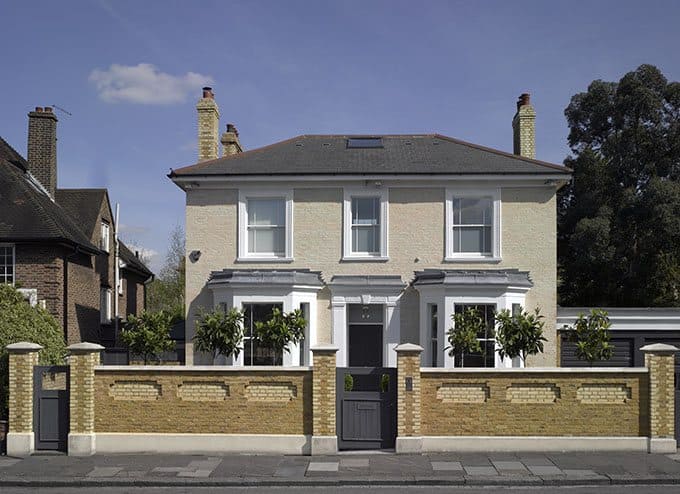BLOG
INTERESTING STUFF
THAT CAUGHT OUR EYE
John’s Builds: The Terraced Tardis in Putney

Every architect should work on their own home. Not only is it a case of practising what you preach, it also develops an essential empathy for what clients go through.
Personally, I’m something of a habitual self builder. I’ve carved out homes for myself and my family across a range of sizes, types and locations and there’s no doubt that I have more left in me.
So instead of talking about another of the projects the practice has completed, I’m going to share my own builds and what I learned from them.
My first was 18 years ago, with the conversion of a little terraced house in Putney, a real Tardis that looked tiny from the front but extended back forever. It started life as a typical Victorian house, right down to the outside toilet and side passage for hanging washing.
With Jemima, my wife, due to have our first child, we wanted to create the perfect setting for our new family life. After choosing the property, we filled out its potential with a strong vision that, at the time, was an unprecedented conversion for the area.
Consistent with my reputation, we decided to clear out the cellular rooms to make space for light filled, open plan living spaces. The long, narrow shape of the property put a hard limit on how far we could extend.
An unconverted roof space was the perfect opportunity to expand upwards but back then loft conversions were known for being cramped and dark. Considering we wanted to squeeze a bathroom and our bedroom there, we knew we had to do something unconventional.
We spotted the key to the problem during our honeymoon in Australia, a country where modern design was and is thriving. The bathroom in our hotel room was separated by glass instead of wall, making the space feel significantly larger and doubling the amount of natural light.
Importing that ingenious touch and installing large windows in our loft bedroom and bathroom, we allowed for 180 degree views of the horizon that made the space feel far more vast than its floor space suggested.
Letting the light in was just as essential to the design on the ground floor. By filling in the side passage, stripping out walls and replacing the entire back of the kitchen with glass, we created an uninterrupted view of the back garden from the front door.
Nowadays, glass walls are a common feature of kitchen renovations but 18 years ago they a rarity. Instead of the wide range of contractors we’d be able to contact today, we had to hire a company that produced glass shop fronts to find something that fitted.
But the project was not the string of successes it’s sounded like so far. Much of what I know today I’ve learned the hard way on my own builds.
Mostly, I was battling against my own ambition. Falling into the trap of being uncompromising leads to unnecessary expenses, while achieving 90% of what you set out to do is worthwhile if that remaining 10% means a significant reduction in costs.
Choosing the focal points of the house and prioritising the features that are most important allows you to cut away unnecessary spending.
Realising the thousands of people involved in building a home was an enlightening reality check. The people working in the factory that make your fittings, the delivery drivers, the contractors, the surveyors – each one adds potential for delay.
It left me with a deep appreciation for the high quality contractors that back up their skilled tradespeople with a meticulous logistics team. The amount of spinning plates in my first build was nothing compared to the later ones, so I’m glad I learned that lesson early on.
Looking back to what feels like a different life now, it’s humbling to see how much has changed and, in many ways, what hasn’t. My passion for elegant, simple and efficient design has only grown since and I’ve never stopped finding new ways to fulfil it.
I’ll be continuing to give you a history of my builds throughout the coming year. By the time we’ve caught up to where I am now, I’ll likely be planning the next one.
